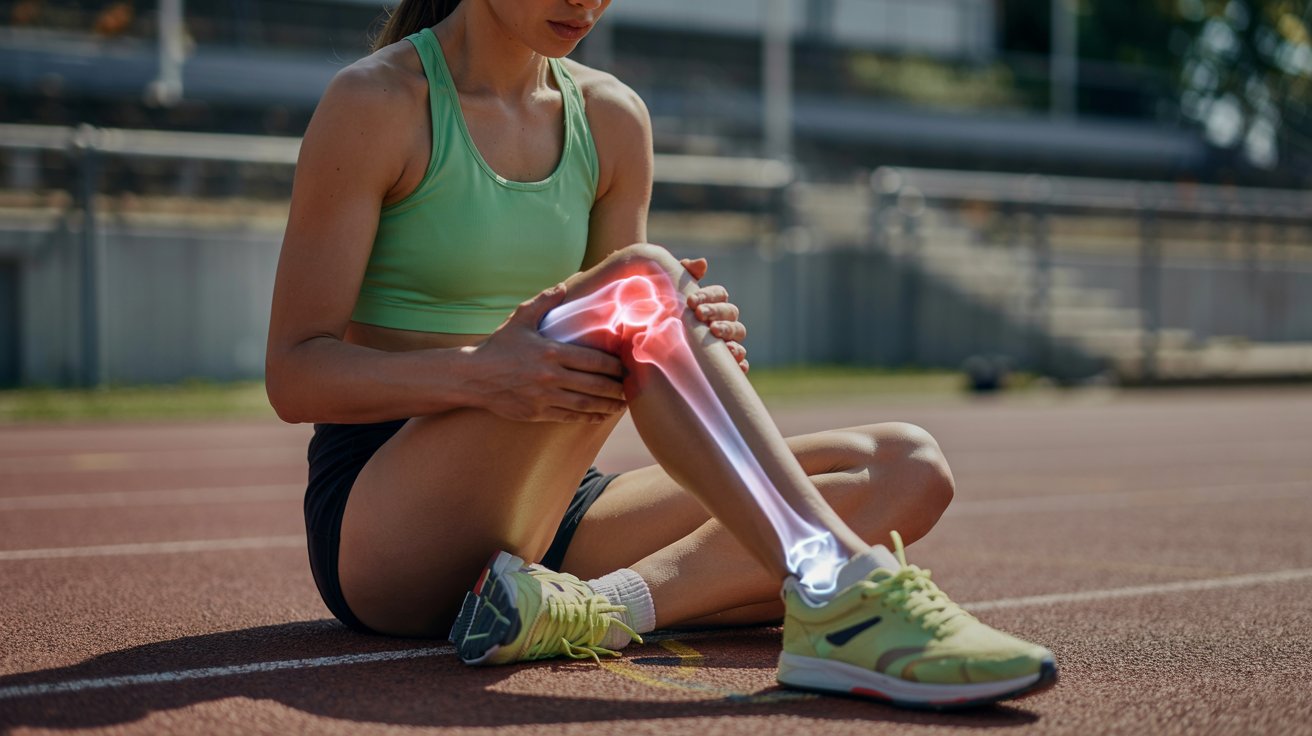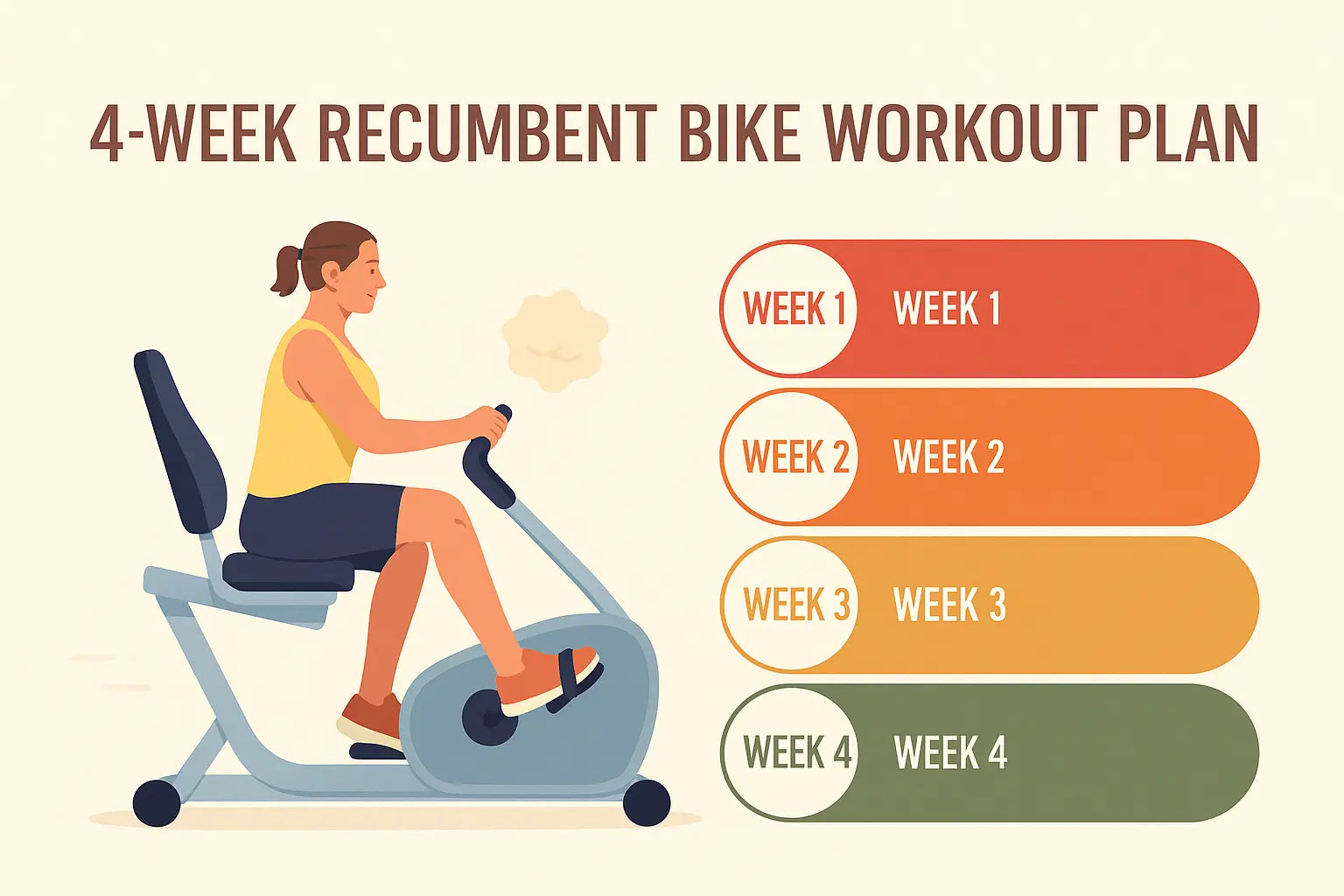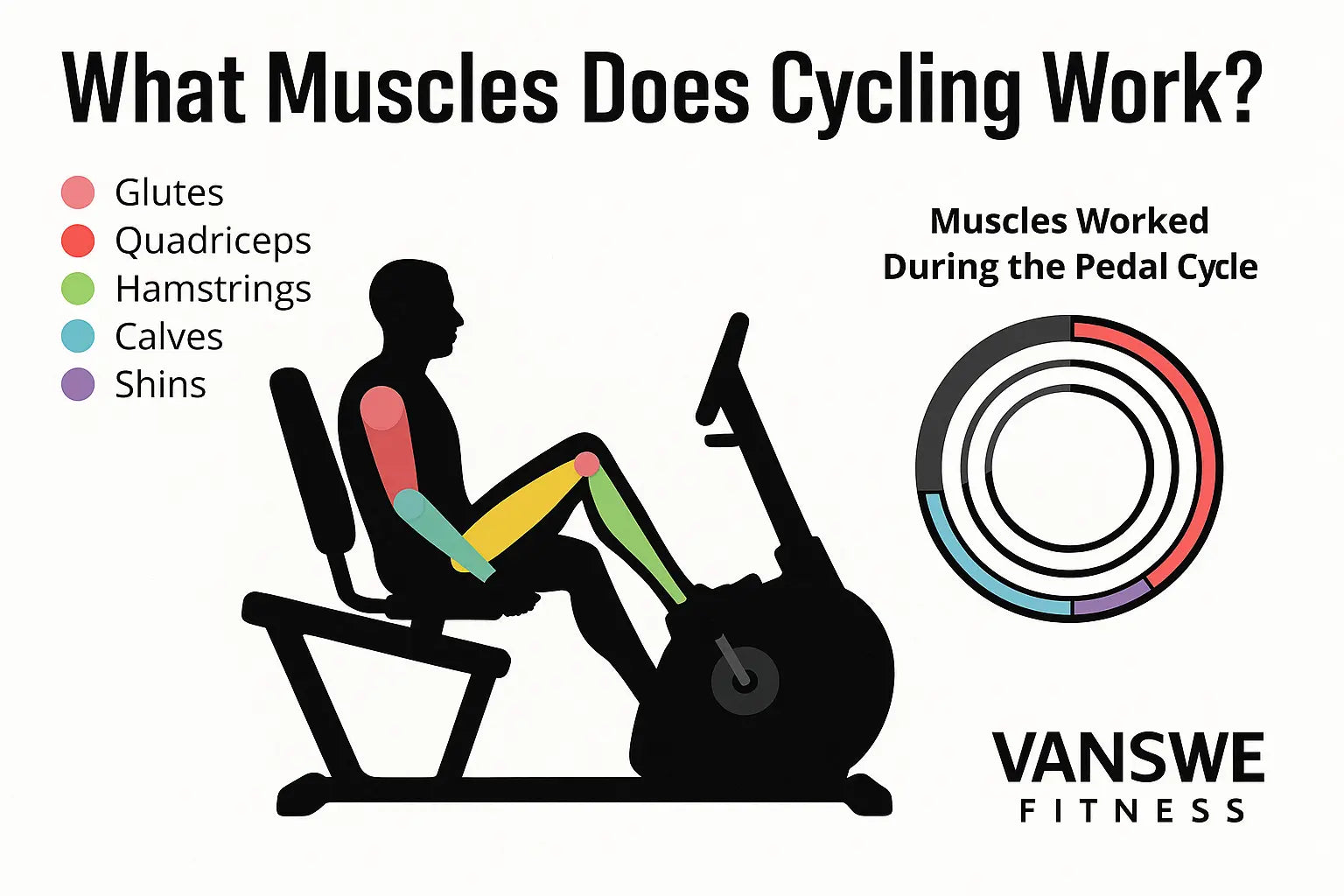Is a Recumbent Bike Good for Knees?

Yes, recumbent bikes are proven to be knee-friendly. Clinical studies show they help reduce pain and improve joint function in people with knee osteoarthritis.A 2021 systematic review published in Clinical Rehabilitation showed that stationary cycling, including recumbent biking, significantly reduces pain and improves joint function in individuals with knee osteoarthritis [1]. Additionally, a biomechanical study by Reiser et al. titled "Knee loads in the standard and recumbent cycling positions" [2]found that recumbent bikes significantly reduce anterior shear forces on the knee, particularly those that place strain on the ACL (anterior cruciate ligament). While both cycling positions allow similar joint movement, the recumbent setup’s reclined posture and front-positioned pedals minimize ligament stress, making it a safer and more joint-friendly choice—especially for people recovering from injury, managing arthritis, or seeking low-impact cardio for long-term use.
What Type of Bike Is Best for Bad Knees?
For most people with knee pain, recumbent bikes are the gentler, safer option—especially during recovery from surgery or while managing arthritis. A detailed biomechanical study titled "Understanding recumbent cycling: instrumentation design and biomechanical analysis" [3] compared recumbent and upright cycling positions and confirmed that the recumbent setup reduces joint loading and offers more stable pedal dynamics—making it especially beneficial for those with knee concerns.
This adds to a growing body of evidence favoring recumbent bikes in joint-friendly rehabilitation and long-term knee care.
- Upright bikes are more like traditional outdoor bikes. They position you forward with the pedals under your body. While they give a great full-body workout, they can put more stress on your knees because of the angle and weight placement.
- Recumbent bikes, on the other hand, have a larger seat with back support, and the pedals are out in front of you. This design helps take pressure off your knees and hips.
Related Article: Is a Recumbent Bike Good for Arthritic Knees?
Is a Recumbent Bike Better for Knees Than Upright?
Yes, in many cases, a recumbent bike is better for your knees than an upright bike. A 2020 study titled "The effect of knee model on estimates of muscle and joint forces in recumbent pedaling" [4] provides further biomechanical evidence that recumbent cycling places less stress on the knee joint than upright cycling. This reinforces the recommendation for recumbent bikes in rehabilitation and joint-sensitive training.
| Feature | Recumbent Bike | Upright Bike |
|---|---|---|
| Knee Joint Impact | Lower—thanks to reclined position | Higher—more load through upright posture |
| Seat Comfort | Large seat with back support | Small seat, minimal back support |
| Stability & Posture | More stable, easier to maintain posture | Requires core engagement for balance |
| Motion Control | Forward pedal path, less joint stress | Vertical pedal path, more knee loading |
| Best for Rehab? | ✔️ Yes—especially early recovery | ❌ Only after strength & flexibility return |
This side-by-side breakdown highlights why medical professionals often recommend recumbent bikes for individuals with joint pain, ACL recovery, or osteoarthritis.
What Is Better: A Recumbent Bike or an Upright Bike for Knee Rehab?
When it comes to knee rehab, recumbent bikes are usually the top choice, especially in the early stages of recovery. A rehabilitation-focused study titled "Leg general muscle moment and power patterns in able-bodied subjects during recumbent cycle ergometry with ankle immobilization" [5] provided valuable insights into how recumbent cycling affects lower limb muscle dynamics and joint safety.
- After ACL or meniscus surgery, for example, recumbent bikes let you move your knee joint gently through its range of motion without loading it with your full body weight.
- The seated and reclined position minimizes shear forces on the knee joint.
- You can start with little or no resistance and gradually build up as strength and flexibility improve.
Upright bikes might be introduced later in rehab when your knee has regained enough mobility and strength. But for starting out, a recumbent bike is often safer and more comfortable.
Best Recumbent Bike for Knee Rehab
According to the study "Joint contact forces during semi-recumbent seated cycling" [6], certain design factors in recumbent bikes can significantly influence joint loading—especially important for rehab patients. Based on that, here are a few features to prioritize:
- Adjustable seat: You should be able to slide the seat forward and back to get the right knee angle.
- Low step-through design: Easier to get on and off, especially important post-injury.
- Magnetic resistance: Smooth and quiet resistance that you can increase gradually.
- Comfortable back support: A supportive seat helps you maintain posture and avoid slouching.
Recommended: Vanswe RB407 Recumbent Bike

Product Hightlights
- Affordable & Beginner-Friendly – Designed for entry-level users with a budget-friendly price.
- 16-Level Magnetic Resistance – The lowest starting resistance among Vanswe recumbent bikes—ideal for those with knee pain
- Super Quiet Operation – Utilizes a magnetic flywheel, dual-belt system, and needle roller bearing for noise-free cycling.
- Bluetooth Connectivity & Digital Tracking – Syncs with Kinomap, Zwift, and a free fitness app for interactive training.
- Compact & Adjustable Design – Seat accommodates users from 5'2" to 6'1", ensuring a personalized fit.
Recumbent Bike User Manual
User Experiences & Reviews
"I had knee replacement 3 months ago and wanted to continue to keep/improve my Range of Motion. This bike is perfect. It took about 1 hr to put together. The seat is comfortable and adjustable (forward and back. I move the seat often during workout to get the most stretch and bend I can. The resistance is a nice feature. You can monitor your heart rate by holding handles on the sides of seat.
Bike takes up very little space. I would highly recommend!"
"I'm recuperating from a total knee replacement and needed a bike for my rehab. I'm so pleased with this bike, particularly in that the pedal resistance is perfectly consistent and adjustable. The seat slides too so I can easily adjust the pedaling arch to advance my ability to flex my knee. I had a question about assembling and adjusting the level that locks the seat in place; I was afraid I was going to break it it I pushed harder. I reached out to support and they were back with me in a few hours telling me exactly what I needed to know."
"I like this bike because I do not have to go to the gym. Within the next few months, I will need knee surgery and going to the gym is more painful than the exercising. Same quality as the gym, it gets the job done. It took me a couple of hours to put together myself, I still could not figure out how to put straps on the peddles, however, it works fine without them."
"Once we received the bike, I assembled it without any problem. Instructions are clear and I was amazed at the quality of this bike. I have used it for 1 hour straight and the seat is very comfortable and the bike does not wobble! My wife has knee issues and loves it. She has used it twice on the no resistance mode for 1 hour each time without pain! She can peddle comfortably and exercise the upper body at the same time without holding the handles. It is a very sturdy bike, good quality and good price, do not hesitate to buy it!"
"This bike is being used for rehab after surgery. As a senior woman I had to put it together myself. It took me approximately 2 hours to assemble. Very happy with how quiet it is, my husband was using it and I didn't know he was still on it until I looked over to the bike."
"Wife needed this for rehab after knee replacement surgery. Probably doesn’t have all the features of higher priced brands, but has everything and more for rehabilitation and we both have continued to use it for exercise since purchase."
"I purchased this to rehab bilateral knee replacement surgery. Easy to assemble. Love the adjustable seat and the iPad holder. All in all, a great choice."
"My physical therapist recommended a recumbent bike to help me with my knee pain. I bought this one a year ago and have been very happy with my purchase! It is very comfortable and I like the very readable digital LED monitor which also holds my tablet. Recently the monitor refused to work even after a battery change. I contacted Vanswe Customer Service by email to let them know of this situation. The next day they had a new monitor on its way to me at no charge!! WOW! I had the new monitor within the week, my husband installed it for me and it works perfectly. If only all customer service was this excellent, the world would be a bit happier place. Have no fear to order this reasonably priced and well made exercise bike. If you have any issues at all, this company will make it right."
Related Article: Best Recumbent Exercise Bikes 2025
Why Do My Knees Hurt After Using a Recumbent Bike?
Knee pain after using a recumbent bike is usually caused by improper setup or form. Common issues include:
-
Incorrect seat position – Sitting too close or too far can overbend or overextend your knees.
-
Too much resistance – High resistance adds joint strain; start low and increase gradually.
-
Poor pedaling technique – Avoid locking your knees or pushing too hard.
-
No warm-up – Skipping warm-up can lead to stiffness and discomfort.
If pain persists despite these adjustments, consult a physical therapist to check for underlying joint conditions.
Conclusion
Recumbent bikes are a knee-friendly exercise option that offers support, stability, and a smooth workout. Beginners recovering from knee issues can start with 10–15 minutes of gentle pedaling per session, 3–5 times a week, and gradually increase duration as comfort improves. They’re ideal for people with joint pain, arthritis, or those recovering from knee injuries. While upright bikes can be useful too, the comfort and design of recumbent bikes make them the better choice for knee rehab and long-term joint care.
As always, listen to your body, start slow, and make sure your bike fits you well. Your knees will thank you!
Refference
- Luan L, Bousie J, Pranata A, Adams R, Han J. Stationary cycling exercise for knee osteoarthritis: A systematic review and meta-analysis. Clin Rehabil. 2021 Apr;35(4):522-533. doi: 10.1177/0269215520971795. Epub 2020 Nov 10. PMID: 33167714.
- Reiser RF 2nd, Broker JP, Peterson ML. Knee loads in the standard and recumbent cycling positions. Biomed Sci Instrum. 2004;40:36-42. PMID: 15133932.
- Reiser RF 2nd, Peterson ML, Broker JP. Understanding recumbent cycling: instrumentation design and biomechanical analysis. Biomed Sci Instrum. 2002;38:209-14. PMID: 12085603.
- Koehle MJ, Hull ML. The effect of knee model on estimates of muscle and joint forces in recumbent pedaling. J Biomech Eng. 2010 Jan;132(1):011007. doi: 10.1115/1.3148192. PMID: 20524745.
- Szecsi J, Straube A, Fornusek C. Leg general muscle moment and power patterns in able-bodied subjects during recumbent cycle ergometry with ankle immobilization. Med Eng Phys. 2014 Nov;36(11):1421-7. doi: 10.1016/j.medengphy.2014.05.010. Epub 2014 Jun 10. PMID: 24924382.
- Crossley CB, Diamond LE, Saxby DJ, de Sousa A, Lloyd DG, Che Fornusek, Pizzolato C. Joint contact forces during semi-recumbent seated cycling. J Biomech. 2024 May;168:112094. doi: 10.1016/j.jbiomech.2024.112094. Epub 2024 Apr 15. PMID: 38640830.
Latest Articles






